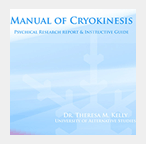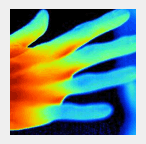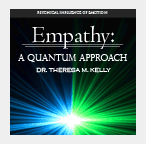Cryokinesis
Parapsychology Articles, Papers and Books
Home > Articles > Psychic Phenomena > Psychokinesis > Cryokinesis
![]()
|
| NEWSLETTERS |
| Get the best from QPsychics.com in your inbox! |
|
| PARAPSYCHOLOGY ORGANIZATIONS |
"With confidence in the importance of utilizing the investigative mode of the established sciences in order to inquire into the authenticity and to potentially explain the nature of psychical phenomena."  |
 |
 |
 |
 |
Cryokinesis Publications
Cryokinesis is the psychical influence involving the deceleration of charged particles to low speeds, typically electrons because of their light weight, via an experients own electrical fields or through the remote influence of similar fields. Experients act as low energy particle decelerators whereby decreasing the temperature of systems, or objects, that are not in thermodynamic equilibrium. Decreased temperatures can lead to object phase changes via the physical processes of cooling or condensation, or result in solidification via freezing. Cryokinesis is also the psychical influence of energy flow in regards to heat absorption. In heat absorption, because of the lower temperature of the experient, heat spontaneously flows from the system, or remote source, in the direction of the experient as long as the experient is cooler than the system as per the second law of thermodynamics. When a thermal connection is made, such as radiation or conduction, the experient and system will exchange internal energy until their temperatures are equalized; that is, until they reach thermodynamic equilibrium.
(Adapted from the paper "Manual of Cryokinesis: Applications, Experimentation, and Measurement” by Theresa M. Kelly, MsD.)
Free Cryokinesis Articles
Publications for Sale
|
||||




